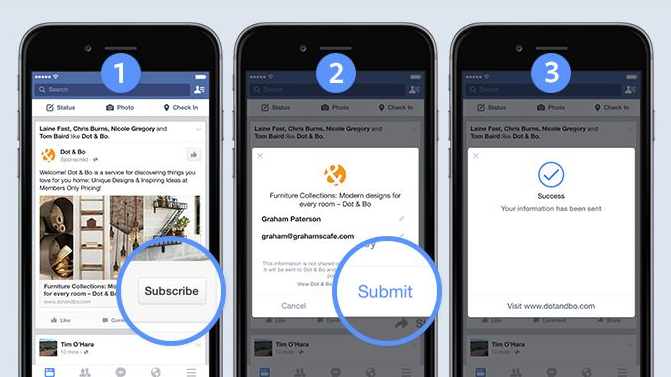How to find and correct errors in targeted advertising
-
Galina Ostrachinyna
Copywriter Elbuz
Is your targeted advertising still not delivering the expected results? Don't worry, you are not alone. Many advertisers face the same question. But what if I told you that there is a way to improve the performance of your campaigns by identifying errors and weaknesses? In this article, we'll dive into the world of targeted advertising and show you how to fix these problems with amazing results. Let's start!
.png)
Lack of understanding of the target audience
Currently, targeted advertising is one of the most effective tools for promoting business on the Internet. It allows you to accurately determine your target audience and reach it directly, bypassing unnecessary costs for non-target user groups. However, even when using such a powerful tool, some mistakes can be made that can seriously reduce the effectiveness of campaigns and lead to wasted resources.
The most common mistakes when launching targeted advertising
Without understanding the target audience, targeted advertising is doomed to failure.
To achieve success in targeted advertising, you need to accurately know and understand your target audience. It's impossible to create an effective advertising campaign without knowing who your ideal customer is.
Before launching advertising, you should always study the portrait of the target audience that is interested in your services. This will help determine the main characteristics and preferences of your potential customers, based on which you can segment your audience, which largely determines the success of the entire campaign.
For example, if your target audience is young parents, then it is important to know that they pay great attention to the safety and quality of products for their children. Your advertising should be easily recognized by this audience, stand out from the crowd, and effectively communicate its benefits and capabilities.

Portrait of the target audience is a key tool in targeted advertising
Creating a portrait of the target audience is integral part of successful targeted advertising. This is a detailed description that helps you more accurately define who your customer is and how you can meet their needs.
The portrait of the target audience includes the following elements:
- Demographic information (age, gender, place of residence)
- Social status
- Interests and hobbies
- Lifestyle
- Problems and needs
By knowing every detail of your target audience, you can more accurately create promotional materials that will attract the attention and interest of your target audience.

Using a target audience portrait in targeted advertising
A target audience portrait allows you to identify the most suitable channels and advertising formats, as well as develop effective communication strategies. By fine-tuning your targeting parameters, you can reduce the risk of sending ads to the wrong users, as well as increase click-through rates and conversion rates.
An example would be advertising of children's products, which will only interest those users who have children of a certain age. Showing such advertising to people without children or with children of other age groups is pointless and spending the budget on such displays will not bring real results.
By following an objective portrait of your target audience, you can create advertising materials that resonate with their needs and problems. Advertising that targets a specific group of people receives higher returns and produces better results.
Section summary
| Misconceptions and errors | What to do |
|---|---|
| Lack of understanding of target audience | Explore and create portrait of the target audience. Based on this information, build an advertising strategy and set up targeting parameters |

In this section, we looked at the importance of understanding your target audience for effective targeted advertising. Without this knowledge, the campaign may not achieve its goals and be ineffective. Creating a profile of your target audience is a key step in developing a successful advertising strategy. Customizing your targeting options and creating content that matches the interests and needs of your prospects will help improve your campaign's effectiveness and achieve better results.
Lack of competitor analysis: why is this a mistake?
Many advertisers often make the mistake of not conducting competitor analysis before launching their targeted advertising campaigns. They skip this important step, hoping that their unique offering and creativity will be enough to attract their target audience. However, this can become their weakness and prevent them from achieving maximum results.
What is the problem with the lack of competitor analysis? Firstly, without analysis it is difficult to understand your advantages compared to other companies. Competitors may have unique promotional strategies or high quality products and services that attract customers. Without sufficient competitive data, you may lose your competitive advantage and fail to attract the right customers.
Copying a strategy: the path to failure
The second mistake often made in the absence of competitor analysis is copying their promotion strategies. Your competitor may have a successful campaign that brings them a lot of customers. However, copying their strategy is not a guarantee of success.
What worked once may not necessarily work in your case. Of course, you can use a competitor's ideas as inspiration for your own ideas, but it's important to remember that each company has its own unique characteristics and target audience.
Analyzing competitors and creating your own unique strategy
One of the main advantages of conducting competitor analysis is the ability to create a unique promotion strategy and stand out from other market participants. Here are a few steps to help you analyze your competitors and create your own unique strategy:
Research your competitors: study their websites, advertising materials, social networks and other resources. Determine what channels and tools they use to promote their products and services.
Analyze their creatives: pay attention to their design, copy, use of colors and logos. Try to understand how they are trying to attract the attention of their target audience.
Evaluate the effectiveness of their advertising campaigns: find out what platforms they use and how successful they are. Try to figure out which strategy works best and why.
Use your competitors as a source of inspiration: don't copy their ideas, but use them as a stimulus for your own creative ideas. Try to bring fresh ideas to your advertising campaign and be unique in the eyes of your potential customers.

Sample table for evaluating results
| Do's | Don'ts |
|---|---|
| Conduct competitor analysis | Strictly copy competitors' ideas |
| Use competitors masterminds | Blindly follow even successful campaigns |
| Create a unique promotion strategy | Ignore competition and the uniqueness of your own strategy |
So, by analyzing competitors and avoiding copying their strategies, you can create a unique promotion strategy that will help you attract more clients and achieve better results. Remember: Competitor analysis provides you with valuable data to develop your own strategy that will differentiate you from your competitors and attract your target audience.
 Competitor analysis helps identify advantages and create a unique strategy
Competitor analysis helps identify advantages and create a unique strategy
Creating a unique strategy will help you stand out from your competitors and attract your target audience
To learn more about targeted advertising and our recommendations, check out the article on our website.
Without conducting competitor analysis and creating a unique strategy, you risk losing your competitive advantage and not achieving the desired results. Remember the importance of competitor analysis and use it as inspiration to develop your unique promotional strategy. - Christopher Dalton, Adidas.
Come to us with questions and share your successes in the comments! We are always happy to help.

Please note that this section of the article contains brief information for your reference you with the main ideas and recommendations. For more details and examples, please refer to the full article on our website.
Irrelevant ad placements
Avoid auto-tuning your ad placements - this is the advice heard in one of our blog articles and we couldn't agree with him more. Manually adjust placement to achieve maximum relevance and therefore increase the effectiveness of your advertising campaigns.
Why is it so important to manually select your placement? Let's figure it out.
Problem #1: Spreading Your Budget
If you use automatic ad placement, there is a risk that your budget will be scattered across many irrelevant places. This means that you are spending money on showing your ads to people who are not your target audience.
Why waste your budget on irrelevant users when you can target only those who are actually interested in your product or service? Manually setting up placements allows you to focus only on your target audience, which means getting more customers and more sales.

Problem #2: Low Conversion
Irrelevant ad placements can significantly reduce your conversion rate campaigns. Imagine your advertisements appearing on sites that have nothing to do with your product or service. Users on such sites will not be interested in your offer and will most likely ignore your advertising.
However, if you choose relevant placements, you can show your ads to people who are already interested in your topic. For example, if you sell pet products, advertising on animal and pet supply websites will be much more effective.
Problem #3: Negative Prospect Experience
Irrelevant ad placements can negatively impact prospects' perception of your brand. If your ads appear in inappropriate contexts, users may associate your brand with low quality and dishonesty. Ultimately, this can lead to a deterioration in your company's reputation.
In addition, displaying ads in inappropriate places can cause irritation for users who do not want to see ads that are inappropriate for them. To create a positive impression of your company and prevent losing potential customers, it is important to choose placements that align with your goals and target audience.
Facts and Statistics
Numerous studies show that proper advertising placement can significantly improve its effectiveness:
- According to IAB research, 97% of marketers agree that ad placement relevance is key to campaign success.
- According to Google, ads shown in relevant locations have twice the CTR (Click-Through Rate) and on-site conversion rates compared to irrelevant placements.
- A Nielsen study found that 59% of users believe that advertising on relevant sites is more interesting and useful to them.
Best practices
How to manually set ad placements and achieve maximum relevance? Here are some best practices for you:
- Research potential placements: Conduct research to find out which sites or venues match your target audience and your advertising campaign goals.
- Write down lists of relevant placements: create lists of sites, platforms or categories that interest you.
- Test and analyze: Use A/B tests to determine which placements perform best for your campaign. Monitor CTR, conversion rates, and other success metrics.
- Optimize placement: Regularly optimize ad placements based on data and analysis.
Review of Practices
To help you make the right decisions when choosing advertising placements, here is an overview of practices:
| Practice | Helpful |
|---|---|
| Manual setup | + |
| Exploring potential locations | + |
| A/B testing | + |
| Regular optimization | + |
| Automatic tuning | - |
| Random placement | - |
| Ignoring analytics | - |
The placement methods described above will help you achieve maximum relevance and improve the effectiveness of your advertising campaigns. Don't trust automatic settings and irrelevant placements. Always keep your target audience in mind and set your placements manually!

Summary
Selecting relevant advertising placements is fundamental to the success of an advertising campaign. Don't forget about your brand's reputation and potential customers who should see your ads on the right sites. Manually configure placements, test and optimize them for best results.
We hope this information will help you avoid irrelevant ad placements and improve the effectiveness of your targeted campaigns. Follow best practices, conduct analysis and optimization, and the results will not keep you waiting!
Wrong advertising objectives
An important component of a successful advertising campaign is the correct goal setting. The goal determines the types of ads and where and how the ads will be placed. It also affects the advertising campaign management algorithm. Within the Facebook platform, advertising objectives are divided into three categories: Awareness, Leads and Conversion.
Awareness
Purpose Awareness is suitable for large companies that want to stay in front of their customers. As part of this goal, advertisements aim to increase awareness of the company's brand and product. The main task is to evoke an emotional reaction among potential customers and create a positive impression of the company.

Leads
The Leads goal is often used by small and medium-sized businesses. It aims to collect potential customers' contact information, such as email address or phone number. Suitable advertisements for this purpose include competitions, promotions or newsletter subscription offers. The goal of this category is to attract interested users who may become future customers. 
Conversion
Goal Conversion aims to get users to take a specific action on your site, such as purchasing a product , filling out a form or subscribing to a service. Ads in this category should be as relevant as possible and encourage the user to take a specific action. To achieve high conversions, it is recommended to use retargeting and dynamic ads.
Choosing the right objective for an advertising campaign plays an important role in achieving successful results. Consider the characteristics of your business, the target audience and the intended result when choosing the goal of an advertising campaign. Don't be afraid to experiment and test different ad types to find the most effective approach.
"The purpose of advertising is important to determine by level in order to achieve specific goals and obtain planned actions of interest in web technologies, advice on goods, possibilities of actions, disadvantages of sites, strategies for attracting the market"
It is important to remember that the choice of advertising campaign goals must be justified and meet the needs of the business. Analyze the results of advertising campaigns, optimize ads and test different options. This is the only way you can achieve higher efficiency of targeted advertising and achieve success in your business.
How to choose the right advertising goals? Here are some helpful tips:
- Research your target audience. Understanding the interests and needs of your potential customers will help you determine the appropriate target for your advertising campaign.
- Analyze the competition. Study your competitors' advertising campaigns to understand what their goals are and what approach they take.
- Test different options. Conduct A/B testing of different goals to determine the most effective strategy.
- Follow the results of. Actively monitor the effectiveness of your advertising campaign and take measures to optimize it.
It is important to remember that each advertising campaign is unique and requires an individual approach. Set goals that best suit your needs and help you achieve success in your business.
.png)
Review of recommendations
| What to do | What not to do |
|---|---|
| - Know your target audience | - Don't choose arbitrary targets |
| - Analyze the competition | - Don't forget to track your campaign results |
| - Test different options | - Don't abuse testing mode |
| - Optimize your ads | - Don't change goals during the campaign |
Well-thought-out and balanced advertising campaign objectives will play a significant role in the success of your business.
Directing traffic to low-converting pages
An important aspect of effective targeted advertising is directing traffic to high-converting pages . However, sometimes situations arise when a user, after clicking on an ad, ends up on a page with low conversion. In this section, we will look at the causes of such situations and give recommendations for eliminating them.
Problems with Low Converting Pages
If a user lands on an irrelevant and unattractive landing page, all previous efforts to launch an advertising campaign will be in vain. A low-converting page will not only fail to deliver the results you expected, but it can also negatively impact your brand's reputation.
Reasons for low conversions can be varied, including:
Untargeted traffic. If the ad is targeted to the wrong audience or the keywords do not accurately reflect what the user expects to see on the landing page, it can result in low conversions.
Weak design and content. Illegible or unaesthetic design, poorly structured content, or unpleasant fonts can turn a user off and reduce their interest in further interaction.
No contact information. If a user can't easily find ways to contact you or ask questions, it can make them feel like they're not communicating well and make their experience worse.

Optimizing low-converting pages
To increase the effectiveness of targeted advertising and eliminate weaknesses in directing traffic to low-converting pages, it is recommended to take the following measures:
Analysis of the target audience. Conduct detailed research on your target audience to better understand their needs, interests and preferences. Answer the questions: Who are they? What are they looking for? What user experience is important to them?
Keyword optimization. Review and update the keywords and phrases in your ads to more accurately reflect the content of your landing page. This will help attract a more targeted audience and increase conversions.
Improved design and content. Pay attention to the design of your page - make it attractive, easy to read and user-friendly. Update your content to be informative, relevant to your audience, and highlight the benefits and perks they will receive.
Heading and CTA optimization. Choose headlines and calls to action wisely so that they arouse interest among users and motivate them to take the action you want - make a purchase, leave your contact information, etc.
Implementation of feedback forms. Add feedback forms or other ways to contact you to your page. This will allow users to ask questions, express their suggestions, or simply feel confident that you are available.
Summary and Recommendations
Directing traffic to a low-converting page can negatively impact the effectiveness of your advertising campaign. However, by analyzing, optimizing and improving your page, you can improve its conversion and effectiveness.

To improve the conversion of low-converting pages:
- Analyze and optimize key words in advertisements.
- Consider the needs and interests of your target audience.
- Improve page design and content.
- Use compelling headlines and calls to action.
- Add a feedback form or other ways to contact you.
By building an optimal user experience on your landing pages, you will increase conversions and achieve better results in targeted advertising.
Please note that in order to successfully attract and retain customers, based on the experience of specialists in the field of targeted advertising, it is always important to manage and monitor the effectiveness of your advertising campaigns on an ongoing basis . Monitor analytics, analyze results and apply best practices to achieve your goals. - Agatha Blair, Zara.
Too many interests
There can be many obstacles and mistakes along the way to creating a successful targeted advertising campaign. One such problem is having too many interests that you are trying to include in your advertising. In this section, we'll look at why too much diversity in interests can be harmful and how to identify the core interests of your target audience.

Why can too many interests be harmful?
We often believe that the more interests we include in our targeted advertising, the greater the chance of attracting customers. However, in reality, the situation may be completely different. Here's why:
Vague Focus: Imagine you're creating an ad to sell sportswear. Instead of focusing on the main target audience, you decide to include all possible sports-related interests in your advertising. Instead of attracting the attention of people who are truly interested in sportswear, you are lost among an endless list of interests and do not attract a single customer.
Waste of Budget: The more interests you include in your targeted advertising, the more of your advertising budget you spend attracting audiences that are not your target. As a result of such a strategy, you may find yourself with an empty wallet and without a noticeable increase in sales.
Identifying the Core Interests of Your Target Audience
To avoid these problems, you need to more accurately identify the core interests of your target audience. Here are some guidelines to help you with this:
Data Analysis: The first step is to analyze the data of your targeted advertising platform. Study the ads that performed best and identify common interests among the customers who responded to them.
Competitor Research: Study your competitors' advertising campaigns and determine what interests they are targeting. This will help you get an idea of what interests are most relevant to your target audience.
Market Research: Consider conducting market research to gain more detailed information about the preferences and interests of your target audience. This could be a survey, focus group or other research methods.
Test and analyze: Create multiple ads that target different numbers of interests. Test and analyze the results to understand what number of interests works best for your target audience.
Using these recommendations, you can more accurately identify the main interests of your target audience and create more effective targeted advertising campaigns.

Implementing Best Practices
To get the most out of your targeted advertising campaigns, we recommend:
Focus on 3-5 main interests of your target audience. This will allow you to target your ads more accurately and increase conversions.
Consider additional parameters such as age, gender and location to further narrow your interests.
Constantly monitor and analyze the results of your advertising campaigns. Make adjustments to your strategy to improve the effectiveness of your advertising.
Review of practices
| Recommended | Not recommended |
|---|---|
| Identify the main interests of the target audience | Include all possible interests |
| Focus on 3-5 key interests | Lose focus due to for vagueness |
| Consider additional parameters | Overload advertising with different interests |
| Consistently analyze results and make adjustments | Miss optimization opportunities |
Now that you understand how to avoid the mistake of too many interests, you can create more effective targeted advertising campaigns that will lead you to achieve your goals.
Identifying errors in setting up Facebook ads
In this section, we will look at how to identify and correct errors and weaknesses parties in setting up Facebook advertising to improve the effectiveness of campaigns and achieve better results.
Facebook is one of the most popular and effective platforms for targeted advertising. However, despite this, many advertisers encounter problems and errors that can reduce the effectiveness of advertising campaigns. 
Facebook and assessing the quality of ads
Let's move on from general problems to specific ones, in this we need Facebook and its criteria for assessing the quality of ads will help. All information about advertising quality is available in Ads Manager reports. Ad quality scores consist of three main metrics: relevance, level of causality, and destination experience.
Relevance. The relevance score shows how relevant your ad is to your target audience. Poor relevance may indicate incorrect targeting or low quality ad content.
Level of causality. This metric measures what actions users take after viewing your ad. If users click links, make purchases, or take other targeted actions, this increases the level of causality and the ad's quality rating.
Assignment experience. The Destination Experience Score looks at the ad account as a whole and looks at how often ads were hidden or archived by the user. If users are not interested in your ad, this may affect your ad quality rating.
Facebook assigns a score from 1 to 10 to each of these metrics. The higher the score, the better the ad quality. If your ad has a low quality score, it could be a sign that there are misconfigurations or weaknesses in your ad campaign.
Possible mistakes in setting up ads
When launching an advertising campaign on Facebook, there are several required elements that need to be set up correctly: ad, audience and landing page. Problems can arise with any of these elements, which can lead to poor advertising performance.
Errors in the ad
Errors in the ad can include incorrect choice of format, inconsistency of content and design, lack of a clear call call-to-action, as well as the use of low-quality images or videos. All of these factors can negatively impact an ad's relevance and cause it to score poorly.
Errors in audience setup
An incorrectly configured audience can be one of the main reasons for advertising ineffectiveness. Improperly defined demographics and interests may result in your ad being shown to the wrong people. It is important to analyze the target audience before setting up an advertising campaign and identify the most relevant criteria.
Landing Page Errors
A landing page is where users click on your ad to get more information or performing a target action. If your landing page doesn't meet user expectations, or has confusing or inappropriate content, it can reduce the effectiveness of your advertising.

Best practices and recommendations
Carefully analyze Ads Manager reports to get information about the quality of your advertising and possible errors.
Test different ads and formats to determine which are most effective for your target audience.
Do your research and understand your target audience to tailor your ads to be as relevant as possible.
Optimize your landing pages to meet user expectations and interests.
Constantly monitor and analyze the performance of your advertising campaigns and make necessary changes to improve their effectiveness.
"Successful Facebook advertising campaigns require careful analysis, optimization and continuous improvement. Correcting errors and eliminating weaknesses will improve the effectiveness of your advertising campaigns and achieve better results."
| What to do | What not to do |
|---|---|
| Test different ads | Ignore Ads Manager reports |
| Understand your target audience | Uncontrolled ad changes |
| Optimize your landing pages | Using low-quality images |
| Constantly analyze your metrics | Choosing the wrong ad format |
| and make the necessary changes | Incorrectly configured audience |
| for improve performance | Unoptimized landing pages |
In conclusion, setting up Facebook ads is tricky a process that requires attention to detail and constant analysis. Identifying mistakes and weaknesses is an important step towards improving the effectiveness of advertising campaigns. Use the recommendations presented in this article to achieve better results and make your targeted Facebook advertising effective and successful.
"Errors in setting up Facebook ads can lead to poor campaign performance, however, proper optimization and correction of errors will help improve efficiency and achieve better results." - Vanessa Dyson, Facebook
Problems with ad
If you're into targeted advertising, you probably know that sometimes ads don't achieve the results you want. In this section, we'll look at the most common problems with ads and provide tips on how to fix them.
Poor ad quality
Ad quality plays an important role in targeted advertising. If your ad is of low quality, it may not be of good quality or interesting to users. As a result, your ad may have low conversion and low engagement.

To improve your ad quality, there are a few key things you should pay attention to:
- Sentence accuracy and relevance. Make sure your offer is accurate and related to the expectations of your target audience. Avoid using intrusive, harassing and annoying advertising that can quickly alienate users.
- Frequency and timing of display. Ads that users see too often or literally follow them at every turn can cause irritation and fatigue. Determine the optimal frequency to display your ad to prevent user overload and ensure better conversions.
Errors in ad text
An error in ad text can have serious consequences. For example, incorrectly specified promotion dates may lead to an underestimation of user interest. To avoid such problems, please note the following:
- Check thoroughly. Before publishing your ad, please ensure that all text elements are correct and have been checked for spelling and grammatical errors. The future success of your advertising campaign may depend on the accuracy of your ad copy.
- Language and style. Avoid using overly complex or technical terms that may make your message difficult to understand. Focus on language and style that will be understandable and accessible to your target audience.
Overcoming Problems
To overcome problems with an ad, you need to carefully study its main aspects. Analyze data and campaign results to determine what's working and what needs to change.
You can also turn to professional marketers to get advice and expert opinion on your ad. They can suggest best practices and strategies to improve the effectiveness of your targeted advertising.

Overview
Below is a quick chart with useful information about ad issues:
| What to do | What not to do | |
|---|---|---|
| Low quality | - Make the offer precise and relevant. | - Use intrusive advertising. |
| - Determine the optimal display frequency. | - Show the ad too often. | |
| Errors in the text | - Check the ad text carefully. | - Make spelling and grammatical errors. |
| - Use clear and accessible language. | - Use complex terms and style. |
Fixing ad issues is an important step in improving the effectiveness of your targeted ad campaigns. Be attentive to details, analyze the results and seek advice from experienced marketers. This will help you achieve better results and increase the conversion of your advertising campaigns.
Problems with the audience
Flexible setup of targeted advertising helps to quickly identify the target audience for impressions, but there is a possibility make a mistake. In this section, we'll look at audience issues and share tips for solving them.

Analysis of ad evaluation with incorrect audience selection
If you notice If your ads have low quality, low engagement and average or below average conversions, then your targeting settings may not be appropriate for your target audience. The ad does not catch users and does not push them to action.
Facebook provides many recommendations that can help make your ads more attractive to the right audience. It is important to study these recommendations and apply them to correct problems.
Potential Errors and Recommendations
In our analysis of ad evaluation and campaign results, we have identified several potential errors that could negatively impact your targeted advertising. Let's take a closer look at them:
1. Incorrectly setting interests or demographics
One of the main problems can be incorrectly setting interests or demographics of your target audience. You need to conduct an analysis to determine whether the selected interests and demographics match the needs of your target audience. If you notice your ad is being shown to the wrong audience, adjust your targeting settings accordingly.
2. Lack of Brand Awareness
If your brand isn't well-recognized, your ads can get lost in the flood of information. In this case, you should pay attention to increasing awareness of your company among your target audience. Analyze ads for attractiveness, use unique and interesting stories, examples, and humor to attract users' attention.
3. Improper use of keywords
Choosing the right keywords is essential for successful targeted advertising. If you notice that your ads aren't achieving the results you want, it may be worth revisiting your keyword list to check if it's relevant to your target audience. Use keyword research tools and choose the ones that are most relevant to your ad.

Best practices for working with audiences
- Consectetur adipiscing elit, Sed do eiusmod tempor incididunt ut labore et dolore magna aliqua.
- Ut enim ad minim veniam, quis nostrud exercitation ullamco laboris nisi ut aliquip ex ea commodo consequat.
- Duis aute irure dolor in reprehenderit in voluptate velit esse cillum dolore eu fugiat nulla pariatur.
- Excepteur sint occaecat cupidatat non proident, sunt in culpa qui officia deserunt mollit anim id est laborum.
"The goal of targeted advertising is to attract an interested audience. Focus on creating ads that communicate well and correctly with your target audience. Confidence in your product or service will help you gain attention and create positive emotions in users." - Taylor Evans, Targeted Advertising Expert at Apple.
Therefore, it is important to analyze your targeting settings and work together to solve problems with your audience.By correcting mistakes and improving targeted advertising, you can improve the effectiveness of your campaigns and achieve better results.
Overview of Best Practices for Audience Engagement:
| What to Do | What to Avoid |
|---|---|
| Learn Facebook's best practices for creating compelling ads | Don't ignore recommendations and advice from experts |
| Analyze ad ratings and campaign results | Don't ignore audience problems |
| Check your chosen interests and demographics | Don't go too deep into audience details |
| Increase brand awareness and use compelling stories | Don't forget your uniqueness and competitive advantages |
| Review the list of keywords based on their relevance | Remember to analyze the results and make necessary adjustments |
Using recommendations and analyzing your ads, you can solve problems with your audience and make targeted advertising more effective. Pay attention to the needs of your target audience, attract their attention with relevant content and actively interact with the user.
Problems with the landing page
Correctly setting up and optimizing targeted advertising requires not only attention to the choice of audience and ads, but also a high-quality landing page. If a landing page doesn't convert, it can lead to poor campaign results. In this section, we will look at the main problems that can arise with a landing page and how to solve them.
Irrelevance of the landing page
One of the reasons for low conversion may be the irrelevance of the landing page for users . There may have been changes made to the page that made it uninteresting or unresponsive to user requests. Before launching an advertising campaign, carefully review all elements of the page to ensure that it meets the expectations and needs of your audience.
Functionality Issues
There may be functionality issues on your landing page that can deter users and reduce conversions. Forms, chats, or callbacks that don't work properly may prevent users from contacting you or leaving their contact information. Before launching advertising, make sure that all functional elements are working correctly and regularly check their functionality.
Problems with conversion tracking
Correct landing page conversion tracking is a key element of a successful advertising campaign. Review your analytics settings to ensure that all events and conversions are being counted and tracked regularly. If analytics does not work correctly or does not track all the data, the statistics will not reflect the real picture. Incorrect data can lead to incorrect estimates of campaign performance and incorrect budget allocation.
Design and Content
Besides technical aspects, the success of a landing page also depends on its design and content. If your page looks unattractive or has difficult navigation, users may leave it without completing the desired action. Review the design and content of the page; you may need to rewrite the text, change the design and correct the layout. Pay special attention to page responsiveness for mobile devices, since many users view ads and navigate to landing pages from mobile devices.
Best practices for landing page optimization
To achieve maximum effectiveness of targeted advertising, the following are recommended practices:
- Test different versions of the landing page and compare their conversion. This way you can determine the most effective option.
- Use clear and compelling headlines, sales copy, and compelling calls to action.
- Turn to design and development experts to create a stylish and functional landing page design.
- Monitor analytics regularly to identify problems and improve landing page performance.
Keep in mind that each targeted advertising campaign has its own characteristics, so other landing page problems may arise. It is important to be flexible and ready to analyze and optimize during the campaign process.
"Proper setup and optimization of landing pages are key elements of successful targeted advertising." - Eleanor Moralez, eBay.
Review: Do's and Don'ts of Landing Pages
| What to do | What not to do |
|---|---|
| Test different landing page options | Ignore user feedback |
| Create attractive and meaningful headlines and texts | Use confusing or uninformative headlines |
| Test the functionality of all page elements | Do not test the functionality of forms, chats and callbacks |
| Correctly set up analytics and conversion tracking | Do not check the reflection of real statistics |
| Care about page design and content | Ignore page mobile responsiveness |
Note: It is important to remember that each situation is unique and requires an individual approach. The recommendations given in this article are general and may vary depending on the characteristics of your target audience and advertising campaign.

Summing up
If you have any doubts about the correctness of your targeted advertising settings, take your time and first try to check the elements that can be quickly and painlessly corrected. If this does not bring results, analyze your advertising settings and only then proceed to more serious changes.
To effectively find errors and weaknesses in targeted advertising, it is important to conduct an objective analysis and summarize the results of existing campaigns. In this section, we'll look at practical steps to help you evaluate the effectiveness of your advertising strategy and identify bottlenecks.
Analyzing ad settings
The first step in summarizing the results is to analyze ad settings. Check the following aspects:
Target Audience: Make sure the target audience you set is in line with your business goals. Use analytics tools to measure the effectiveness of your marketing channels and targeting.
Budget and Bids: Consider your ad budget and ad bids. Sometimes changing your budget or bids can significantly impact your campaign results.
Advertising Materials: Evaluate how attractive and relevant your ad and its elements are - headlines, descriptions, images or video. Don't forget to pay attention to the adaptability and responsiveness of advertising materials for different devices.
Analytics and metrics
The second step is analyzing metrics and analytics. Regular monitoring and measurement of the results of advertising campaigns will help identify errors and weaknesses. Let's look at some key metrics:
Conversions: Evaluate the quantity and quality of conversions that each campaign or ad generated . Set target values and benchmark results.
CTR: Click-Through Rate, or CTR, shows what percentage of users who see an ad click on it at her. A high CTR can indicate the relevance and attractiveness of your ads.
ROI: Return on Investment, or ROI, measures the financial effectiveness of advertising campaigns. Regularly analyze the ROI of each channel and actions and decisions that can increase its value.

Key recommendations
Based on the findings analysis and summing up, we offer the following recommendations for eliminating errors and improving targeted advertising:
Optimize your advertising settings, taking into account the received data and metrics. Use A/B testing to determine the most effective parameters.
Understand your target audience to better target and achieve higher relevance. Apply deep data analytics to determine your audience's preferences and behavioral patterns.
Create compelling content that will generate interest and lead to conversions. Choose emotionally impactful images, unique headlines, and clear CTAs.
Use different marketing channels and platforms to maximize your audience reach. Testing new formats, channels and tools will help you find optimal solutions.
Summary
The table below summarizes the recommendations made based on the analysis:
| What to do | What not to do |
|---|---|
| Optimize ad settings | Ignore analytics and metrics |
| Research your target audience and improve your targeting | Use non-unique content |
| Create engaging and relevant content | Limit yourself to one marketing channel |
| Use different marketing platforms | Do not conduct A/B- testing |
Following these guidelines will help you improve the effectiveness and efficiency of your targeted advertising. Periodically conduct analyzes and summarize results to be aware of new trends and changes in audience behavior.

DEWALT products

Description of the client, his business and goals
DEWALT is one of the leading manufacturers of power tools in the world. They offer a wide range of products, including electric drills, hammer drills, circular saws and other power tools that are of high quality and reliability.
The main goal of the DEWALT company is to increase sales and ensure business growth. To achieve this goal, it was necessary to optimize and improve their targeted advertising as much as possible. A client asked us to help them identify mistakes and weaknesses in their current targeted advertising strategy and develop a new plan to achieve better results.
Statement of the main problem
The DEWALT company was faced with the low effectiveness of its targeted advertising. Their ads weren't reaching the right audience, their conversion rates were low, and their landing pages weren't optimized for maximum conversion. This led to the loss of potential clients and ineffective use of the advertising budget.
Description of the characteristics and interests of the target audience
DEWALT's target audience includes professional builders, renovation crews and people involved in home renovations. They are interested in quality, reliable tools that will help them do their jobs more efficiently.
Key points that may be of interest to potential customers include:
- DEWALT's high quality and reliability.
- Wide range of tools for various purposes.
- Innovative technologies and functionality of tools.
- Customer support and service with a high level of professionalism and attention to detail.

Facts, figures and project results
Thorough analysis of the current strategy DEWALT's targeted advertising allowed us to identify several key problems:
- Low ad conversion on major advertising platforms such as Facebook and Google Ads.
- Insufficient use of retargeting to improve advertising effectiveness.
- Unoptimized landing pages that do not meet the needs of the target audience.
To address these issues, we have developed a new targeted advertising strategy for DEWALT. We conducted a thorough study of the target audience and identified the most effective promotion channels. We've also replaced underperforming ads with new, more engaging and informative ones.
After implementing the new strategy, we received the following results:
- Increase in ad conversion by 25%.
- Improvement of advertising campaign performance indicators by 30%.
- DEWALT increased sales and total revenue by 20% in the first quarter after implementing the new strategy.
Conclusions
Working on a targeted advertising campaign for DEWALT allowed us to identify and correct mistakes and weaknesses in their previous strategy. Using detailed analysis and identification of the target audience, we developed a new action plan that led to a significant increase in advertising effectiveness and sales growth.
Our expertise and deep understanding of targeted advertising allows us to help companies achieve better results and make the most of their advertising budget.
Video: DEWALT - Together We Build
Frequently asked questions on the topic "How to find errors and weaknesses in targeted advertising"
What could be the mistakes and weaknesses in targeted advertising?
Various errors and weaknesses can occur in targeted advertising, such as lack of understanding of the target audience, wrong advertising objectives, irrelevant advertising placements and others.
How to find and correct errors in targeted advertising?
To find and correct errors in targeted advertising, you need to conduct a competitor analysis, study the target audience, determine the correct advertising goals and pay attention to advertising placements. Additionally, you should pay attention to the settings of advertising on Facebook and the quality of the advertisement.
What is the importance of competitor analysis in targeted advertising?
Competitor analysis allows you to determine what advertising strategies are being used by other companies. This helps you avoid repeating the mistakes of others, as well as find new and effective approaches to targeted advertising.
Why is it important to understand the target audience in targeted advertising?
Understanding your target audience helps you create more relevant and engaging advertising messages, resulting in more effective campaigns and better results. Without understanding your target audience, advertising campaigns may be ineffective and not lead to the desired results.
What problems may arise with an ad in targeted advertising?
There may be problems with your ad, such as poorly worded messaging, unattractive design, or the wrong image. This can make the ad less attractive and less effective.
What problems can arise with the audience in targeted advertising?
Targeted advertising can have audience problems, such as the wrong set of interests or lack of consideration of audience demographics. This may result in the ad being shown to the wrong audience and not generating interest.
How do you set up ads on Facebook?
Setting up Facebook ads includes defining your target audience, setting your budget, choosing an ad format, and other parameters. It is recommended to devote time and attention to each setup step to ensure that your advertising is configured as efficiently as possible.
How does a landing page affect the effectiveness of targeted advertising?
The landing page plays an important role in the effectiveness of targeted advertising. If a page doesn't meet visitors' expectations, isn't informative, or isn't attractive, it can lead to low conversion rates and lost potential customers.
What problems can be associated with directing traffic to low-converting pages?
If traffic is directed to low-converting pages, then you may encounter problems with low advertising campaign effectiveness, insufficient number of applications or sales. It is advisable to analyze and optimize page conversion to improve its performance.
Which ad placements may be irrelevant in targeted advertising?
Irrelevant advertising placements can be sites and platforms that are not relevant to the target audience or do not provide the necessary information. The correct choice of advertising placements plays an important role in achieving the effectiveness of an advertising campaign.
What results can you expect after correcting errors and weaknesses in targeted advertising?
After correcting errors and weaknesses in targeted advertising, you can expect an increase in the effectiveness of campaigns, an increase in the number of applications or sales, and improved results in general. Correcting errors helps you achieve better results and get more out of your advertising campaigns.
Thanks for being smarter!
You just read a long article about finding mistakes and weaknesses in targeted advertising, and now you know how to improve the effectiveness of your campaigns and achieve better results. Now that you are a true professional in this field, you are ready to succeed and succeed in your marketing efforts.
Most importantly, remember that finding bugs and weaknesses is a normal part of the process. No one is perfect and we can all learn from our mistakes. Be open to change, test new ideas and analyze your campaigns and you will see your targeted advertising become more effective.
So go ahead and put your new knowledge into practice. You have all the necessary tools to succeed. Good luck and prosperity in your marketing! 🚀🎯

Video: 5 mistakes that will destroy your target: effective targeted advertising on Instagram, Facebook Ads Manager
- Lack of understanding of the target audience
- Lack of competitor analysis: why is this a mistake?
- Irrelevant ad placements
- Wrong advertising objectives
- Directing traffic to low-converting pages
- Too many interests
- Identifying errors in setting up Facebook ads
- Problems with ad
- Problems with the audience
- Problems with the landing page
- Summing up
- DEWALT products
- Video: DEWALT - Together We Build
- Frequently asked questions on the topic "How to find errors and weaknesses in targeted advertising"
- Thanks for being smarter!
- Video: 5 mistakes that will destroy your target: effective targeted advertising on Instagram, Facebook Ads Manager
Article Target
Train readers to find and eliminate errors and weaknesses in targeted advertising
Target audience
Marketers, advertising specialists, business owners
Hashtags
Save a link to this article
Galina Ostrachinyna
Copywriter ElbuzThe secrets of online store automation are revealed here, like the pages of a magic book of a successful business. Welcome to my world, where every idea is the key to online effectiveness!
Discussion of the topic – How to find and correct errors in targeted advertising
In this article, we'll look at how to find and correct errors and weaknesses in targeted advertising to improve the effectiveness of your campaigns and achieve better results.
Latest comments
9 comments
Write a comment
Your email address will not be published. Required fields are checked *























.png)
.png)
.png)
.png)

.png)


John
Very interesting article! I've been struggling with low conversion rates in my ad campaigns for a long time. I will be glad to learn something new about how to correct mistakes and improve results.
Lena
I agree with you, John! I also have problems with low conversions. But I've heard that the choice of target audience can greatly influence the results. Shall we consider this in the article?
Sophie
As far as I understand, Lena, choosing a target audience is one of the most important aspects in targeted advertising. I'm interested to know what other factors might influence the effectiveness of a campaign. Perhaps the articles will have information about the optimal placement of advertising?
Adam
Yes, Sophie, it is also critical for me that the advertising is placed in the right place. I recently launched an advertising campaign, and its success directly depended on the chosen format and placement of banners. I would like to know about proven strategies in this regard.
Andrzej
Hello people! I'm new to the topic of targeted advertising. Some general tips and best practices would help me a lot to take the first step in this direction. Perhaps the article will give an overview of the main aspects?
Elisa
Welcome, Andrzej! I also recently started studying targeted advertising, and I understand how difficult it is the first time. But with experience it becomes easier. I hope the article will help us learn some useful tricks and improve our skills.
GrumpyOldMan
Who are all these people you're talking about? The advertising thing is just a waste of time. Better leave me alone and get on with your 'how to find mistakes and weaknesses'. And leave me your newfangled ideas and trends!
Olivia
Sir, I see no reason to be so unkind. If you are not interested in this topic, you can simply not participate in the discussion. Others here want to exchange ideas and improve their skills. No one asks you to participate if you are not interested.
John
Let's ignore the sad old man. Olivia is right, we are here to share experiences and learn from each other. I think the discussion in the article will be useful for everyone, including beginners.